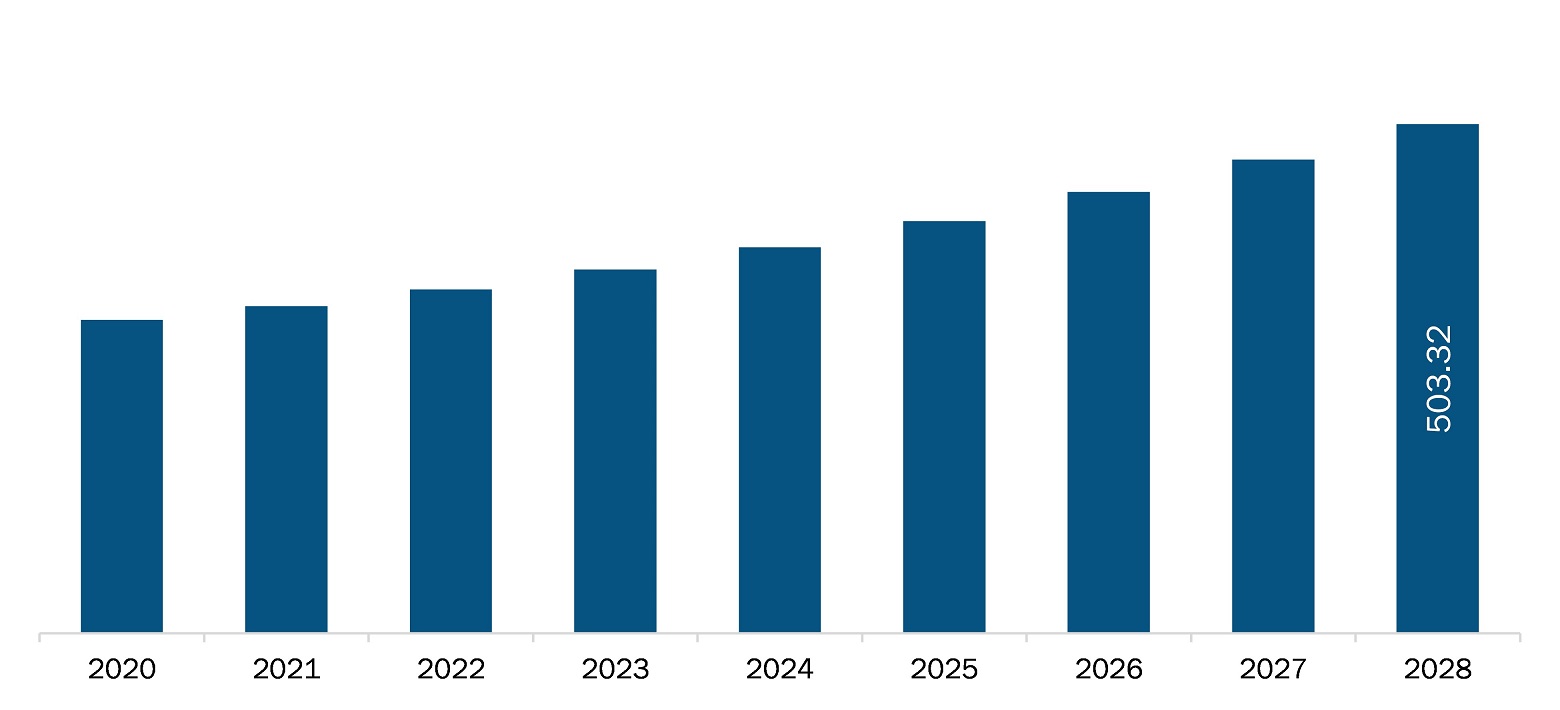The Asia Pacific OTC braces and support market is expected to reach US$ 503.32 million by 2028 from US$ 323.20 million in 2021; it is estimated to register a CAGR of 6.5% from 2021 to 2028.
The growth of the OTC braces and support market is attributed to increasing awareness of braces and support, and rising demand for OTC braces and supports across the world. However, the availability of alternative therapies is restraining the market growth.
The emerging markets in developing economies are likely to offer better and lucrative growth opportunities to the major market players of OTC braces and supports to expand their business and geographical reach. The treatment of orthopedic conditions and musculoskeletal diseases has become simpler due to various technological advancements. Braces and supports have helped patients in getting rid of ingesting heavy-dose medicines and taking hectic therapies. Besides, the rise in healthcare expenditure has allowed developing nations to provide better and more services and facilities to their people. Thus, the adoption of braces and supports is likely to increase in the emerging regions, such as Asia, in the coming years. In addition, these regions are characterized by the increasing geriatric population susceptible to orthopedic and musculoskeletal disorders. For instance, Japan has ~30% of population with age 60 and above. The market players of OTC braces and supports are likely to leverage these conditions to provide effective therapeutic products. Further, the developing regions are witnessing a rise in the number of start-ups investing more on the healthcare sector. Local manufacturers of orthopedic braces and supports are showing interest in technological advancements. Therefore, emerging or developing countries are likely to present high growth potential for the OTC braces and supports market players in the coming years. Also, the trend of better-quality OTC braces and supports is likely to grow dramatically due to increasing popularity of e-commerce platforms. Moreover, innovative products, revolutionary technology, and successful events have created opportunities for the companies to continue the production of orthopedic braces and supports. Thus, they are likely to add the value to their customers and attract more customer base for their products in the coming years.
Countries in Asia Pacific are facing challenges due to increasing incidences of COVID-19 cases. Many measures have been implemented to contain the spread of COVID-19, which have resulted in significant operational disruption in many industries, including healthcare. Staff quarantine, supply-chain failures, and reductions in demand have generated serious complications for companies. Also, there has been a significant drop in in-patient and out-patient for private hospital chains. To relieve healthcare systems, many clinics have been postponing non-critical surgeries. To avoid overburdening in hospitals already struggling to deal with the rising pandemic pressure, doctors are delaying surgeries till the COVID-19 peak is past. As per a report published in the British Journal of Surgery on May 12, the number of operations cancelled in India is estimated at 48,728 per week. Moreover, many big medical device companies such as Stryker, CartiHeal Inc., and Smith & Nephew have predicated the decline in sales in China. Hospitals across China, Hong Kong and Taiwan have been deferring surgeries to prevent the spread of the virus in the region. Thus, the impositions of lockdown and barriers in supply chain for OTC braces and support devices negatively impacted the growth of the market in 2020 and is continuing in 2021.

- This FREE sample will include data analysis, ranging from market trends to estimates and forecasts.
ASIA PACIFIC OTC BRACES AND SUPPORT MARKET SEGMENTATION
By Product
- Knee Braces and Support
- Back Hip and Spine Braces and Support
- Foot Walkers and Orthoses
- Neck and Cervical Braces and Support
- Shoulder Braces and Support
- Elbow Braces and Support
- Hand and Wrist Braces and Support
- Facial Braces and Support
By Type
- Soft and Elastic Braces and Support
- Hard and Rigid Braces and Support
- Hinged Braces and Support
By Application
- Ligament Injury Repair
- Preventive Care
- Osteoarthritis
- Compression Therapy
- Other Applications
By End User
- Hospitals
- Ambulatory Surgical Centres
- Specialty Clinics
- Others
By Country
- China
- Japan
- India
- Australia
- South Korea
- Rest of Asia Pacific
Company Profiles
- DJO Global, Inc.
- ORTHOFIX MEDICAL INC. (Breg, Inc.)
- Bauerfeind
- DeRoyal Industries, Inc.
- Becker Orthopedic
- OPPO Medical Inc.
- Zimmer Biomet
- OTTOBOCK
- 3M
- Bird and Cronin Inc.
Asia Pacific OTC Braces and Support Report Scope
| Report Attribute | Details |
|---|---|
| Market size in 2021 | US$ 323.20 Million |
| Market Size by 2028 | US$ 503.32 Million |
| CAGR (2021 - 2028) | 6.5% |
| Historical Data | 2019-2020 |
| Forecast period | 2022-2028 |
| Segments Covered |
By Product
|
| Regions and Countries Covered |
Asia-Pacific
|
| Market leaders and key company profiles |
|
- Historical Analysis (2 Years), Base Year, Forecast (7 Years) with CAGR
- PEST and SWOT Analysis
- Market Size Value / Volume - Regional, Country
- Industry and Competitive Landscape
- Excel Dataset
Recent Reports
Testimonials
Reason to Buy
- Informed Decision-Making
- Understanding Market Dynamics
- Competitive Analysis
- Identifying Emerging Markets
- Customer Insights
- Market Forecasts
- Risk Mitigation
- Boosting Operational Efficiency
- Strategic Planning
- Investment Justification
- Tracking Industry Innovations
- Aligning with Regulatory Trends






















 Get Free Sample For
Get Free Sample For